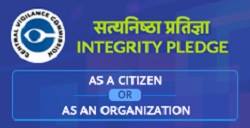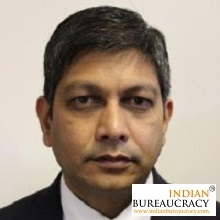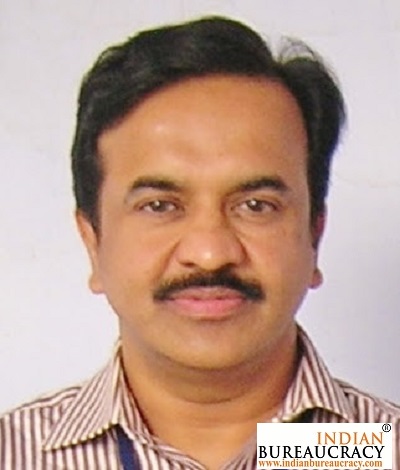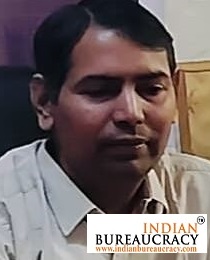The theme for the Vigilance Awareness Week 2016 is ‘Public participation in promoting integrity and combating corruption’. The very core idea of the Vigilance Awareness Week being observed under the initiative of Central Vigilance Commission is that the Commission realized that in a huge country like India, we cannot promote integrity and combat corruption unless there is participation of the public.
What is ‘Integrity’ and ‘Corruption’
Integrity is basically the state in which there is complete coherence and no division. From a practical point of view, integrity means honesty or straightforwardness. As the Central Vigilance Commission deals with the issue of integrity, it looks up it in three different angles. One of course is the integrity relating to intellectual integrity, the second is financial integrity and the third is moral or ethical integrity.
The word corruption is defined by the World Bank as use of public office for private gain. So far as the strict legal aspect is concerned, the Prevention of Corruption Act 1988 defines the objective conditions for the court to decide whether the act of corruption taken place or not when a case comes before that forum. For our analysis in this paper we may adopt World Bank definition of using public office for private gain is relatively accurate and broad based and easy for understanding.
Public Participation
We may now examine the theme of ‘public participation for promoting integrity and combating corruption’ in the context of our country and the government of India.
It was Shri T.N. Seshan, the former Chief Election Commissioner of India who suggested that if the Central Vigilance Commission were to observe one week in a year as a ‘Vigilance Awareness Week’, it will help focusing the attention of promoting integrity and combating corruption right across entire spectrum of government organizations which directly come under the jurisdiction of the CVC but will also have a multiplier effect by way of bringing the whole issue in the public domain.
What was visualized by Shri Seshan, has today set an excellent track record and as we look back at the history of the past two decades, we will find that the youth of today can immediately find resonance with the concept of integrity and combating corruption as the sine qua non for good governance.
In a way, the Vigilance Awareness Week has set into motion of virtuous cycle, one good development following another. It will be appropriate, on the occasion the Vigilance awareness week to quickly trace the developments in the area of public governance in our country since 2000 when the Vigilance Awareness Week was launched.
To begin with, the background of the changes brought about by the Central Vigilance Commission and the focus on promoting integrity and combating corruption in public life is in reality, a saga of the changes that public participation has brought about.
The Advent of RTI Act
Ironically, the beginning in recent times of public participation demanding accountability on governance and checking corruption was in Rajasthan, one of the most backward states of the country. Different states in our country are at different stages of development and though there is a cultural integrity of India, we are a multi ethnic, multi lingual and multi speed country. From the very backward States like Bihar, Madhya Pradesh, Rajasthan, Uttar Pradesh compared to other States like Gujarat, Maharashtra, Tamil Nadu and Punjab, there is a vast difference when it comes to development in various sectors.
It was in Rajasthan that a Non-Government Organization, Mazdur Kisan Shakti Sangatan (MKSS) lead by a committed social activist Aruna Roy who earlier was part of Indian Civil Services, spread awareness among the people of the villages that they should know whether the huge funds which were being made available to Panchayats for the development of the villages were being properly used. The theme she underlined was that Tax revenue is ‘our money, give us an account of how our money is being spent’. “Hamara paisa, hamara hisab’’ was the theme on which she was able to quietly and systematically work in the villages of Rajasthan. This triggered into a powerful movement which finally lead to the enactment of Right to Information Act in 2005.
The Act was indeed revolutionary. It was a diametrically opposite concept under which the States had so far ruled and especially, from the colonial period. So far, there was no method by which the citizens were taken in to confidence and informed about what the government intended to do and how their tax funds were being spent. The RTI proved to be a game-changer as its enactment ensured public participation which lead to overall awareness about how transparency can be brought out in the governmental system and how government can be made accountable.
In 2010, Anna Hazare, who has been active for more than three decades in the village of Ralegan city in Maharastra, became the leader of very popular movement India Against Corruption[IAC]. It grabbed the attention of the entire nation as if it was a second movement for independence. It got an unpresented boost, thanks to the 24/7 electronic media and the all embracing social media.
The growth of the internet and especially the social media what is SCAM (Social, Cloud, Analytical, Mobile) areas of development in communication today have virtually placed tremendous powers in the hands of practically every citizen and voter so that he/she can access information and also spread ideas and opinion on a scale not only nationally but internationally and the impact of this have been very dramatic especially in more backward place where physical infrastructure might not have developed but the accessibility of mobile and information technology have empowered people.
In a country like ours, this continuous participation of the people in promoting integrity and combating corruption, especially in the last decades have led to situations that set political agendas and electoral issues. The 2014 elections were largely shaped by the civil society agitations and media coverage of various scams. It is, therefore, appropriate that this year’s theme of Vigilance Awareness Week is focuses on public participation on promoting integrity and combating corruption.
This can be a broad overview. Our experience in the last two decades and more has also shown us that there are multiple aspects of public participation and one has to be clear that we do not do injustice to anyone and we are fair. In fact, the manner in which the anti-corruption movement and public participation have evolved in the last few years, seem to highlight some negative dimensions. In this context, a mention about role of media would be pertinent. The electronic and print media play a large role in highlighting the issue of corruption and lack of integrity in public life. Though there is not only the ostensible objective of doing the public service but on certain occasion, there is also tremendous commercial interest. In the case of the electronic media, there is a continuous competition for getting higher Television Rating Points. There is a possibility that truth and objectivity get suppressed in the process.
With all these, we should appreciate the remarkable role played by our judiciary which has been able to maintain the focus on really bringing guilty to book and laying down standards so that the agencies who are fighting corruption function on the right lines.
In fact, various scams which marred the reputation of past governments in recent times, are all the results of the gross and brazen misuse of powers for private gain which came out in the public domain thanks to the alertness of the media and the activists. Transparency is the best guarantee against corruption. We have a law now of the Lok Pal but one does not know how effective it will be, because, ultimately the responsibility for integrity is on the individual himself.
As we observe the Vigilance Awareness Week this time, this author would like to emphasize one very important aspect. This aspect is that now we have the inspiring leadership of our Prime Minister Shri Narendra Modi. He has given supreme importance to the issue of good governance from the day he assumed charge as the Prime minister. Every step taken since he became Prime Minister, is for realizing that supreme national vision. We can all therefore look forward to a great future for the country.
The initiatives taken by the Prime Minister, right from his days of the Chief Minister and the way in which he conducted the campaign and every measure, he has taken, have shown that he realises that eternal vigilance is the price of liberty. Under his leadership, we are on our way to become one of best countries in the world drawing inspiration from our own ethical cultural roots.





